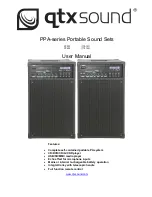
System Overview
1-9
Similarly, envelope protection will provide high-speed protection
and alerting near V
ne
. In this case, as V
ne
is approached in AP
mode, the autopilot will adjust pitch as required to maintain an
airspeed near V
ne
. Aircraft bank angle is not adjusted by the
autopilot during overspeed protection. Depending on conditions
(e.g. rapidly changing airspeed, turbulence, etc.), it is possible for
V
ne
to be exceeded. An overspeed condition is annunciated to the
pilot via an “
OVERSPEED
” text alert on the PFD, a “SPEED
PROTECTION ACTIVE” aural alert in the headsets, and by a
flashing of any engaged (green) autopilot mode annunciators.
The DFC100 takes flap position into account in Envelope
Protection and Envelope Alerting calculations and as a result, the
definition of V
s
, changes depending on flap position.
NOTE
Envelope Protection During Icing Conditions
The DFC100 autopilot is not to be used during icing
conditions in any non-FIKI approved aircraft, or
during severe icing conditions in any FIKI approved
aircraft. The autopilot does not have any kind of
AOA or icing input and therefore does not register
changing aircraft dynamics during icing conditions.
Therefore, Envelope Protection is not effective
under icing conditions.
FULL-TIME ENVELOPE ALERTING
The DFC100 autopilot provides speed-based and attitude-based
envelope alerting whenever the autopilot is not engaged (servos
not coupled).
Full-time Envelope Alerting is provided during flight director
operations (servos not coupled). Full-time Envelope Alerting is
also provided even when the autopilot and flight director are off
and the autopilot is in the standby position as noted by the
AP
READY
mode annunciator on the top strip of the PFD pages.
Change 1
















































